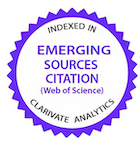Efeitos da densidade de estocagem sobre a qualidade da água na criação do tambaqui (Colossoma macropomum, CUVIER, 1818) durante a segunda alevinagem, em tanques fertilizados
Palavras-chave:
Piscicultura, tanques-redeResumo
Utilizaram-se 3.120 alevinos de tambaqui (Colos-soma macropomum, CUVIER, 1818), com pesos iniciais de 1,41 ± 0, 49 g, estocados nas densidades de 33, 43 e 53 alevinos/m2, com o objetivo de verificar o efeito de três densidades de estocagem sobre a qualidade da água na criação do tambaqui durante a segunda alevinagem em viveiros fertilizados. Alimentaram-se os peixes com ração comercial, fornecida três vezes ao dia, ad libitum. Analisaram-se os seguintes parâmetros: oxigênio dissolvido, pH, alcalinidade total, amônia não ionizada e nitrito, utilizando-se kit químico de análise de água, e a transparência mediante o Disco de Secchi. O delineamento foi inteiramente casualisado, em esquema fatorial 3 x 5, com três densidades de estocagem e cinco análises.Os resultados obtidos neste estudo permitiram concluir que, dentre as densidades de estocagem utilizadas, a maioria das variáveis hidrológicas estudadas permaneceu dentro dos padrões adequados para o bom desenvolvimento do tambaqui cultivado em tanques fertilizados. Para as densidades de 33, 43, 53 alevinos/m², o pH foi de 7,05; 6,65; 6,95; alcalinidade, de 43,10; 39,90; 39,30; nitrito, 0,015; 0,045; 0,060; amônia, 0,015; 0,045; 0,060; transparência, 64,00; 65,90; 58,80, com exceção do oxigênio, de 3,10; 2,55; 2,34, que apresentou valores inferiores aos recomendados na literatura, mas que não foi prejudicial ao desenvolvimento desses peixes.
Palavras-chaves: Alevino, parâmetros hidrológicos, sistema intensivo.
Downloads
Downloads
Publicado
Como Citar
Edição
Seção
Licença
Copyright (c) 2007 Ciência Animal Brasileira / Brazilian Animal Science

Este trabalho está licenciado sob uma licença Creative Commons Attribution 4.0 International License.
Autores que publicam nesta revista concordam com os seguintes termos:
- Autores mantém os direitos autorais e concedem à revista o direito de primeira publicação, com o trabalho simultaneamente licenciado sob a Licença Creative Commons Attribution que permite o compartilhamento do trabalho com reconhecimento da autoria e publicação inicial nesta revista.
- Autores têm autorização para assumir contratos adicionais separadamente, para distribuição não-exclusiva da versão do trabalho publicada nesta revista (ex.: publicar em repositório institucional ou como capítulo de livro), com reconhecimento de autoria e publicação inicial nesta revista.
- Autores têm permissão e são estimulados a publicar e distribuir seu trabalho online (ex.: em repositórios institucionais ou na sua página pessoal) a qualquer ponto antes ou durante o processo editorial, já que isso pode gerar alterações produtivas, bem como aumentar o impacto e a citação do trabalho publicado (Veja O Efeito do Acesso Livre).


























